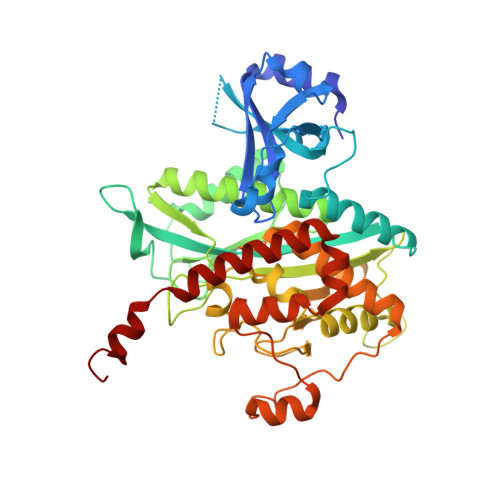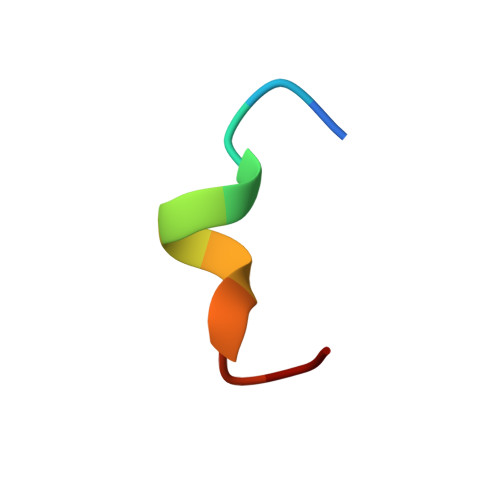Molecular dissection of the glutamine synthetase-GlnR nitrogen regulatory circuitry in Gram-positive bacteria.
Travis, B.A., Peck, J.V., Salinas, R., Dopkins, B., Lent, N., Nguyen, V.D., Borgnia, M.J., Brennan, R.G., Schumacher, M.A.(2022) Nat Commun 13: 3793-3793
- PubMed: 35778410
- DOI: https://doi.org/10.1038/s41467-022-31573-0
- Primary Citation of Related Structures:
7TDP, 7TDV, 7TEA, 7TEC, 7TEN, 7TF6, 7TF7, 7TF9, 7TFA, 7TFB, 7TFC, 7TFD, 7TFE - PubMed Abstract:
How bacteria sense and respond to nitrogen levels are central questions in microbial physiology. In Gram-positive bacteria, nitrogen homeostasis is controlled by an operon encoding glutamine synthetase (GS), a dodecameric machine that assimilates ammonium into glutamine, and the GlnR repressor. GlnR detects nitrogen excess indirectly by binding glutamine-feedback-inhibited-GS (FBI-GS), which activates its transcription-repression function. The molecular mechanisms behind this regulatory circuitry, however, are unknown. Here we describe biochemical and structural analyses of GS and FBI-GS-GlnR complexes from pathogenic and non-pathogenic Gram-positive bacteria. The structures show FBI-GS binds the GlnR C-terminal domain within its active-site cavity, juxtaposing two GlnR monomers to form a DNA-binding-competent GlnR dimer. The FBI-GS-GlnR interaction stabilizes the inactive GS conformation. Strikingly, this interaction also favors a remarkable dodecamer to tetradecamer transition in some GS, breaking the paradigm that all bacterial GS are dodecamers. These data thus unveil unique structural mechanisms of transcription and enzymatic regulation.
Organizational Affiliation:
Department of Biochemistry, 307 Research Dr., Box 3711, Duke University Medical Center, Durham, NC, 27710, USA.





















